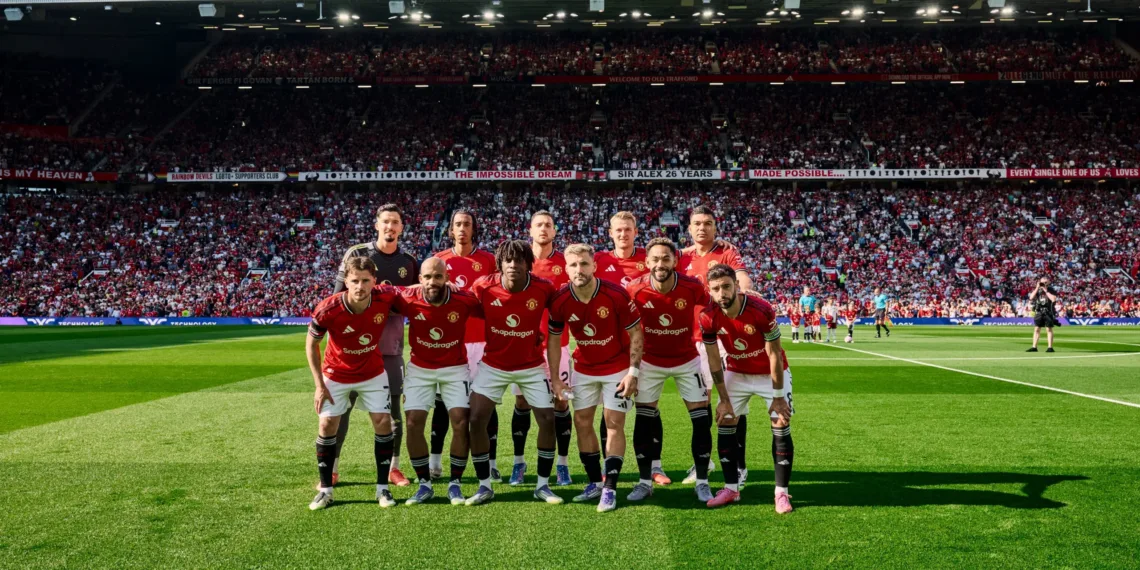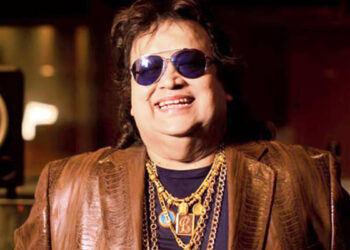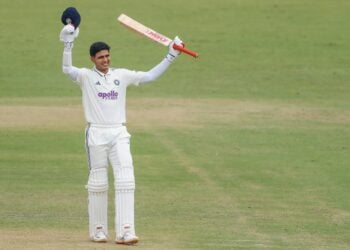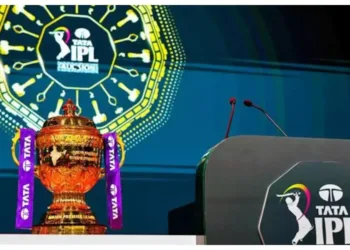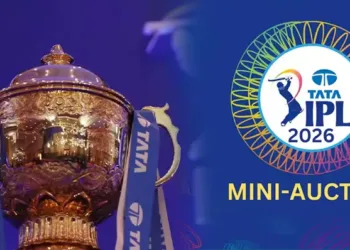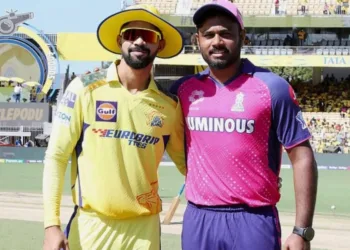Manchester United enter the 2025-26 season following their worst-ever Premier League campaign (15th place) but with renewed hope after a £200+ million spending spree led by Benjamin Sesko (£73.7m), Matheus Cunha, and Bryan Mbeumo. With no European football for the first time since 2014-15, five critical questions will determine whether Ruben Amorim’s radical rebuild can restore the fallen giants.
No amount of spin can paint Manchester United’s 2024-25 season in anything but the darkest colors. Their 42 points represented the joint-fewest they’ve accumulated in a top-flight season since relegation in 1973-74, while their 15th-place finish was the lowest league position in the club’s modern history. The humiliation was compounded by scoring just 44 goals – fewer than relegated sides in some previous campaigns.
Yet from this historic nadir, Ruben Amorim and the United hierarchy have responded with unprecedented summer investment. Over £200 million has been spent on attacking reinforcements, led by Benjamin Sesko’s £73.7 million arrival from RB Leipzig. The message is clear: this is not mere tinkering but complete reconstruction.
For a club without European football for the first time since 2014-15, the 2025-26 season represents both opportunity and ultimatum. Either Amorim’s revolution succeeds, or Manchester United risk becoming a cautionary tale of decline accelerated by poor decision-making.
Table of Contents
The Historic Collapse of 2024-25
The statistics from last season make for grim reading. United’s 42 points were accumulated through just 11 wins, nine draws, and a staggering 18 defeats. They scored the fewest goals (44) of any Premier League campaign in their history and conceded 62 – a defensive record that exposed systematic failures across the pitch.

Statistical Breakdown of Decline
| Metric | 2024-25 Performance | Historical Context | Previous Low |
|---|---|---|---|
| League Position | 15th | Worst ever in Premier League era | 7th (2013-14) |
| Points Total | 42 | Joint-lowest since 1973-74 | 64 (2013-14) |
| Goals Scored | 44 | Lowest in Premier League era | 49 (2005-06) |
| Goals Conceded | 62 | Second-worst since 2013-14 | 64 (2013-14) |
| Defeats | 18 | Most in a Premier League season | 12 (multiple seasons) |
The Europa League final defeat to Tottenham provided the only positive narrative, yet even reaching that stage couldn’t mask the domestic catastrophe unfolding in parallel.
Amorim’s Radical Surgery
Ruben Amorim inherited this mess in November 2024 but made immediate, controversial changes. His insistence on implementing a 3-4-2-1 system mid-season contributed to short-term pain, with the Portuguese manager later admitting he felt frustrated before games, knowing “we are not going to be competitive.”

The boldness of his approach has continued into the transfer market, with Amorim explicitly targeting players who “want to be here” over those chasing European football elsewhere.
Question 1: Will the Absence of European Football Actually Help United’s Rebuild?
For a club once guaranteed Champions League football, the absence of any European competition feels catastrophic. Yet Amorim has reframed this setback as a potential advantage, stating: “For us not to be in the Champions League could be an advantage to perform well, to build that core that we need for the future.”
The Training Ground Advantage
Amorim repeatedly referenced last season’s challenges in implementing his tactical system while playing every three days. Without European commitments, United will have significantly more training time to embed the complex 3-4-2-1 formation that requires precise positioning and movement patterns.

This could prove crucial given the wholesale changes to personnel. With new signings needing integration and existing players requiring tactical re-education, the additional coaching time represents a genuine opportunity.
Injury Prevention Benefits
United’s injury problems were among the Premier League’s worst in 2024-25, with players cumulatively losing 1,295 days to fitness issues and illness – the fifth-highest total. Their most common defensive partnership started only seven times, highlighting the disruption caused by constant injury crises.
Reduced Schedule Analysis
| Competition | 2024-25 Games | 2025-26 Projected | Difference |
|---|---|---|---|
| Premier League | 38 | 38 | 0 |
| European Competition | 14 | 0 | -14 |
| Domestic Cups | 8 | ~6-8 | ~-2 |
| Total | 60 | ~44-46 | ~-16 |
The reduction of approximately 16 matches could allow for better player management and tactical preparation, potentially offsetting the financial and prestige losses from European absence.
Question 2: Can £200+ Million of New Attacking Talent Transform United’s Goal-Scoring Woes?
United’s attacking output in 2024-25 was historically poor. Their 44 goals were the fewest in Premier League history, while they underperformed their expected goals total by 11.5 – worse than any team except Crystal Palace. The systemic nature of their finishing problems extended far beyond individual failures.
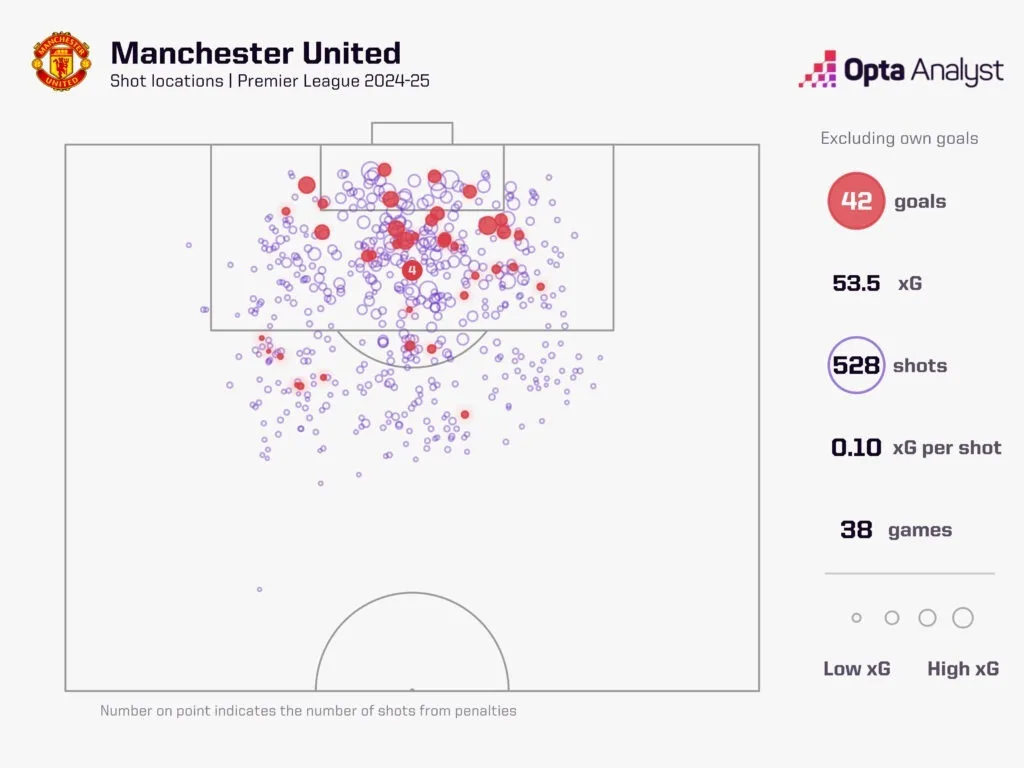
The Finishing Crisis Breakdown
Biggest Underperformers vs Non-Penalty xG:
- Bruno Fernandes: -2.6 (despite being one of few to maintain reputation)
- Mason Mount: -2.3
- Diogo Dalot: -2.1
- Joshua Zirkzee: -1.8
- Alejandro Garnacho: -1.3
- Rasmus Højlund: -1.2

Only Lisandro Martínez (+0.7) and Amad Diallo (+3.3) overperformed their expected goal totals, highlighting the widespread nature of United’s finishing problems.

Summer 2025 Transfer Activity
| Player | Position | Fee | Previous Club | Career Goals (League) |
|---|---|---|---|---|
| Benjamin Sesko | Striker | £73.7m | RB Leipzig | 39 goals in 87 games |
| Matheus Cunha | No. 10/Winger | £62.5m | Wolves | 21 non-penalty goals (2024-25) |
| Bryan Mbeumo | No. 10/Winger | £65m | Brentford | 22 non-penalty goals (2024-25) |
| Diego León | Youth Prospect | Undisclosed | Cerro Porteño | Development signing |

Creative Solutions
Beyond pure goal output, United lacked creativity. Only three players recorded 3.0+ expected assists in open play last season, compared to seven at Liverpool, six each at Newcastle, Manchester City, and Chelsea, and five at Villa, Bournemouth, and Crystal Palace.

Cunha and Mbeumo’s arrival addresses this directly. Both players offer superior technical ability in tight spaces compared to Garnacho, whose tendency to shoot (69.9% of shot-creating actions) rather than create limited United’s attacking flow.
Question 3: Has Amorim Found the Midfield Balance That Eluded Him All Season?
United’s midfield combinations remain Amorim’s biggest tactical puzzle. Despite extensive experimentation, no partnership provided both defensive stability and creative dynamism required for his system.
Current Options Analysis
Bruno Fernandes + Kobbie Mainoo:
- Pros: Technical ability, press resistance (Mainoo), creativity (Fernandes)
- Cons: Limited physical presence, defensive vulnerability
Bruno Fernandes + Casemiro:
- Pros: Experience, set-piece threat, leadership
- Cons: Casemiro’s declining pace (age 33), transition vulnerability
Bruno Fernandes + Manuel Ugarte:
- Pros: Defensive work rate, energy
- Cons: Ugarte’s limited composure and passing range

The Transition Problem
Last season, teams reached United’s final third in transitions on 541 occasions – only five sides were more susceptible. This exposed the insufficient protection provided by United’s midfield options, regardless of combination.
Potential Solutions
Reports suggest continued interest in Brighton’s Carlos Baleba, though his cost would be prohibitive. The more likely scenario involves Amorim accepting imperfect balance while relying on improved defensive structure and Fernandes adapting to a deeper role.
Question 4: Can André Onana Silence the Doubters and Secure His Future?
United’s goalkeeping situation remains problematic despite two seasons for Onana to establish himself. Mid-July reports of a loan offer for Aston Villa’s Emiliano Martínez suggested institutional doubts about their current number one.
Onana’s Alarming Error Rate
Since joining from Inter, only Bart Verbruggen (9 errors) has committed more errors leading directly to goals than Onana (8) across all competitions. His average of one error every 1,151 minutes ranks poorly among regular Premier League goalkeepers.
Among 29 goalkeepers playing 2,500+ minutes over the same period, only five have averaged fewer minutes per error leading to a goal.

The Broader Context
Onana’s struggles extend beyond shot-stopping. While recruited for his distribution abilities, United’s squad lacks the technical sophistication to maximize his passing range. His incisive long balls often find no suitable targets, negating his primary supposed advantage.
Altay Bayindir’s unconvincing performances as understudy mean Onana retains his position by default rather than merit. The pressure for improvement is immense, with another error-prone season potentially ending his United career.
Question 5: Is Benjamin Sesko the Striker to End United’s Center-Forward Curse?
United’s pursuit of a reliable striker has spanned multiple transfer windows and managers. Rasmus Højlund’s struggles – just four Premier League goals in 2024-25 – exemplified broader issues with chance conversion and physical presence.
Højlund’s Statistical Deficiencies
Physical Duels: 29.5% success rate (worst among forwards with 900+ minutes) Aerial Duels: 24.6% success rate (contributing to overall poor showing) Box Positioning: 1.2 shots inside area per 90 (lowest among regular center-forwards)

While service quality contributed to these struggles, Højlund’s off-ball movement also deserved scrutiny. His proportion of runs into the box (26.9%) fell below the average for similar strikers (28.7%).
Sesko’s Profile and Potential
| Attribute | Sesko | Højlund | Advantage |
|---|---|---|---|
| Age | 22 | 22 | Equal |
| Height | 6’5″ | 6’3″ | Sesko |
| Duels Success Rate (last 2 seasons) | 44.4% | 33.4% | Sesko |
| Aerial Success Rate | 57.1% | 24.6% | Sesko |
| Shot Frequency (per 90) | 2.8 | 1.6 | Sesko |
| Long-range Shooting | 41 shots from outside box | 12 shots | Sesko |
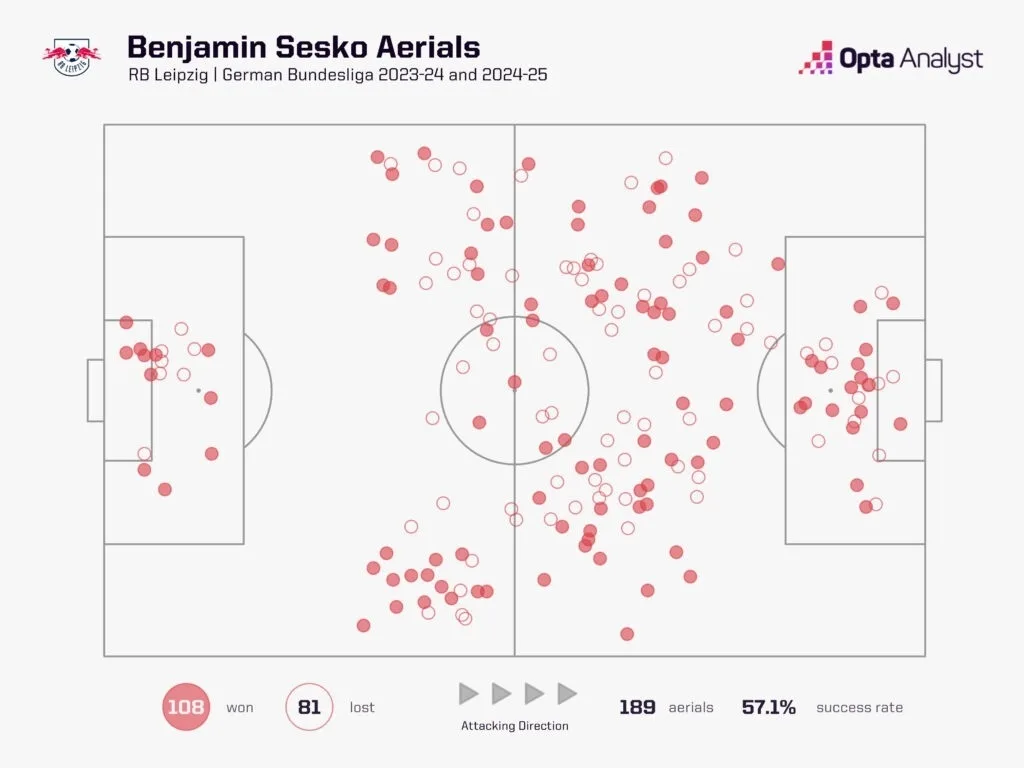
Sesko’s superior physical attributes and shot frequency suggest better suitability for Premier League demands. His willingness to shoot from distance also provides tactical flexibility that Højlund lacked.
Integration Challenges
Sesko’s arrival in a front three with Cunha and Mbeumo pushes Bruno Fernandes deeper, potentially creating midfield balance issues. The Portuguese captain’s preference for advanced positions conflicts with tactical necessities, creating a domino effect through United’s formation.
Squad Overhaul: Ins and Outs
Confirmed Departures
Contract Expirations:
- Christian Eriksen
- Victor Lindelöf
- Jonny Evans (retired, joined academy staff)
High-Profile Exits:
- Marcus Rashford (loan to Barcelona with option to buy)
- Expected departures: Alejandro Garnacho, Antony, Jadon Sancho, Tyrell Malacia

The Garnacho Situation
Amorim’s public comments about Garnacho wanting “a different thing with different leadership” signal the end of his United career. The academy product’s inability to adapt to the demanding number 10 role in Amorim’s system, combined with tactical mismatches, make departure inevitable.
Tactical Evolution: The 3-4-2-1 System
Amorim’s insistence on his preferred formation reflects philosophical commitment over pragmatic adaptation. The system demands:
- Wing-backs: Constant attacking thrust while maintaining defensive discipline
- Number 10s: Technical ability in congested areas, creative vision
- Striker: Physical presence, hold-up play, clinical finishing
- Center-backs: Comfort in possession, defensive leadership
Early signs suggest the new signings better suit these requirements than previous incumbents.
Financial Implications
United’s summer spending approaches £200 million despite no European revenue streams. This aggressive investment reflects INEOS ownership’s commitment but also creates pressure for immediate improvement.
The lack of Champions League income (worth £40-50 million annually) means domestic success becomes crucial for financial sustainability and future transfer activity.
Fixture Analysis and Early Tests
United begin the season with a challenging opener against Arsenal at Old Trafford on August 17. This fixture will provide immediate assessment of summer improvements against established top-four opposition.
Critical Early Fixtures
August-September: Arsenal (H), Brighton (A), Liverpool (H), Crystal Palace (A) Autumn Challenges: Manchester City (A), Chelsea (H), Tottenham (A)
The lack of European midweek games means better preparation time, but also increased scrutiny on domestic performance.
Realistic Expectations for 2025-26
Given the scale of change and previous season’s collapse, modest progress should be considered success. Realistic targets include:
Minimum Expectations
- Premier League: Top 10 finish (improvement of 5+ places)
- Domestic Cups: Quarter-final appearances
- Goal Output: 60+ Premier League goals (improvement of 16+)
Optimistic Targets
- Premier League: Top 6 finish and European qualification
- Domestic Cups: Semi-final appearances
- Tactical Implementation: Clear identity and improved performances
Success Criteria
- Premier League: 4th-6th place finish
- Playing Style: Entertaining, recognizable tactical system
- Squad Harmony: United dressing room without “stragglers”
The Amorim Factor: Long-term Vision
Amorim’s declaration of wanting to stay “20 years” at United demonstrates ambition beyond short-term fixes. His track record of systematic improvement at Feyenoord suggests patience with his methods could yield significant returns.
The Portuguese manager’s willingness to make difficult decisions – evidenced by his handling of Garnacho and others – indicates the ruthlessness required for elite-level reconstruction.
Read More: Giovanni Leoni’s Liverpool Dream: The Italian Wonderkid Who Earned Arrigo Sacchi’s Approval
FAQs
How much did Manchester United spend in the 2025 summer transfer window and on which players?
Manchester United spent over £200 million on transfers, with major signings including Benjamin Sesko (£73.7m from RB Leipzig), Matheus Cunha (£62.5m from Wolves), Bryan Mbeumo (£65m from Brentford), and Diego León. This represents their largest spending spree in recent years despite having no European football to offer new signings.
Why did Manchester United finish 15th in the Premier League and miss out on European football?
United’s 15th-place finish was their worst-ever Premier League campaign, earning just 42 points with 18 defeats and scoring only 44 goals. Systemic problems included defensive vulnerability (62 goals conceded), poor finishing (underperformed xG by 11.5), and tactical disruption as Ruben Amorim implemented his 3-4-2-1 system mid-season.
How will the absence of European football affect Manchester United in 2025-26?
While lacking prestige and revenue (£40-50m annually), no European football provides advantages including more training time for tactical implementation, reduced injury risk through fewer games (~16 less matches), and opportunity for squad integration. Amorim views this as beneficial for building his tactical system without fixture congestion.
What are the main weaknesses Manchester United still need to address?
Key remaining concerns include goalkeeper André Onana’s error-prone performances (8 errors leading to goals in two seasons), midfield balance with no ideal partnership found, and defensive depth following departures. The integration of multiple new attacking players while maintaining team cohesion also presents challenges.
Can Benjamin Sesko solve Manchester United’s striker problems that plagued Rasmus Højlund?
Sesko offers significant advantages over Højlund including superior physical duels success rate (44.4% vs 33.4%), better aerial ability (57.1% vs 24.6%), and higher shot frequency (2.8 vs 1.6 per 90 minutes). His height (6’5″), pace, and willingness to shoot from distance provide tactical flexibility, though adaptation to Premier League intensity remains to be proven.

